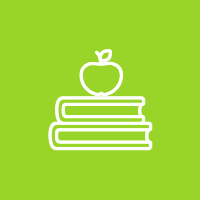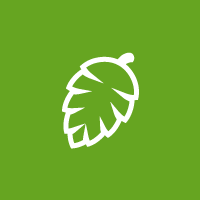Are leaves ever hairy? Do they have teeth? In this activity, your students will take a closer look at leaves and find out more about leaf characteristics and how leaves can be used to identify plants.
This is Activity 64, one of 96 activities in PLT’s PreK-8 Environmental Education Activity Guide (available in print or electronically).
To get the activity:
- Check out this online course with an E-Book (with an option to also purchase a printed guide for an additional fee)
- Contact your PLT State Coordinator. During COVID-19, PLT now offers remote professional development to model ways educators can work with students virtually, including adaptations to PLT activities.
Below are some supporting resources for this activity.
STUDENT PAGES 
Download the copyright-free student pages that are included with this activity:
At Look at Leaves
(PDF)
French: Observation de Feuilles
(PDF)
Spanish Student Page(s):
Un vistazo a las hojas
(PDF)
STEM STRATEGIES 
Engage students in real-world applications of STEM (science, technology, engineering, math) education.
Try these STEM Connections for this PLT activity:
RECOMMENDED READING 
Expand your students’ learning and imaginations. Help students meet their reading goals, while building upon concepts learned in this activity, with the following children’s book recommendations:
FAMILY ACTIVITY 
Try a simple variation of this activity to engage children in the outdoors at home. Download this fun and easy-to-do family activity.
ADDITIONAL RESOURCES 
The following tools and resources may be used to enhance the activity.
-
Indigenous Connections to PLT Activities
The Minnesota Department of Education includes Indigenous-based learning benchmarks in science, language arts, and social studies. Learn how the Minnesota DNR worked with tribes to adapt several PLT activities to include Ojibwe and Dakota culture and knowledge, and get some tips for teaching about Indigenous Peoples with knowledge and respect. Access the Ojibwe and Dakota PLT Lessons that connect students in grades K-8 to forests using Indigenous knowledge and perspectives.
-
Video Demo: Looking At Leaves
In PLT’s Looking at Leaves activity, students take a closer look at leaves and find out more about leaf characteristics and how leaves can be used to identify plants.
-
Identify Trees from Leaves
Leafsnap is a free app that uses visual recognition software to help identify tree species from leaf photographs you take in the field. Leafsnap currently focuses on tree species found in the Northeastern United States and Canada, but expansion is underway to include all U.S. regions.
-
The Science of Fall Leaves
The US National Arboretum has collected online resources on the science of fall foliage. Resources include “The Science of Color in Autumn Leaves,” which describes how and why leaves change color; an extensive photo gallery of trees in fall color; and a list of “Selected Plants Providing Colorful Autumn Foliage.”
-
Tree Product Images
Print out pages containing many examples of everyday products from trees!
-
Citizen Science Programs
Project BudBurst is a network of people across the United States who monitor plants as seasons change. Use Project Learning Tree activities to get your students outside, and use Project BudBurst to help them see how their seasonal observations about plants compare to those being made all across the country. In addition to collecting scientifically useful data such as first leafing, first flower, and first fruit, students will understand the impacts of changing climates on plants and their phenology. Project Learning Tree and Project BudBurst have partnered to introduce students to citizen science as the observations and data needed for Project BudBurst are an easy addition to PLT’s GreenSchools School Site Investigation, as well as many other PLT PreK-8 activities, especially “Bursting Buds,” “Looking At Leaves,” and “Signs of Fall.”
Project FeederWatch encourages students to periodically count the birds they see at feeders in their schoolyard, backyard, or other locations from November through early April and to send their counts to Project FeederWatch. Project FeederWatch is operated by the Cornell Lab of Ornithology and Bird Studies Canada.
FrogWatch USA, the citizen science program of the Association of Zoos and Aquariums, encourages citizens to help conserve amphibians by reporting the calls of local frogs and toads. Ongoing analyses of these data have been used to help develop practical strategies for amphibian conservation.
The USA National Phenology Network brings together citizen scientists, government agencies, non-profit groups, educators, and students to monitor the effects of climate change on plants and animals in the United States. This website includes a variety of educational materials and lesson plans.


